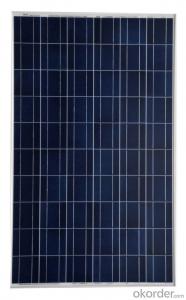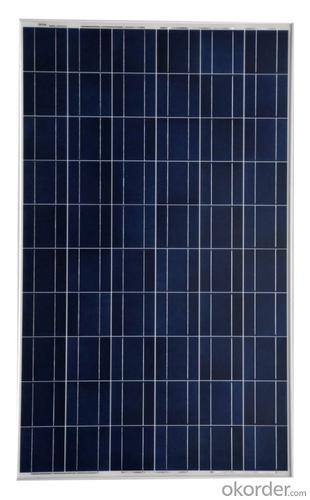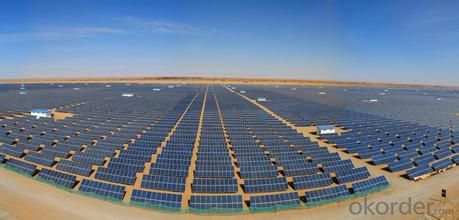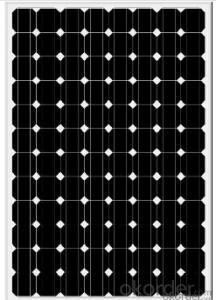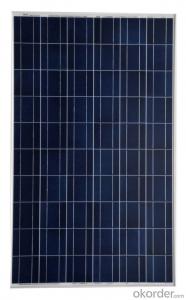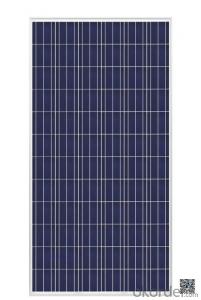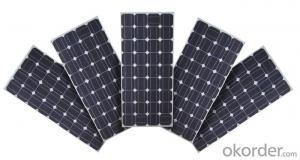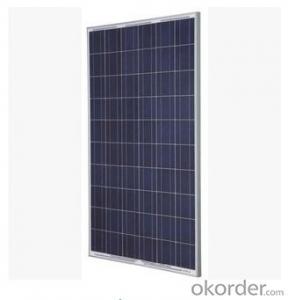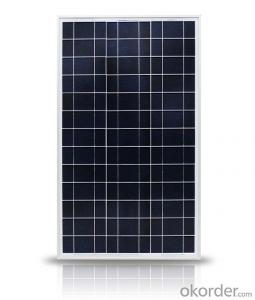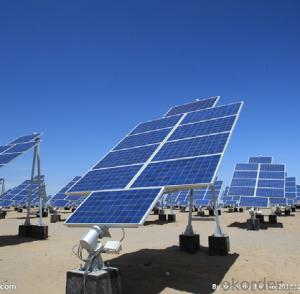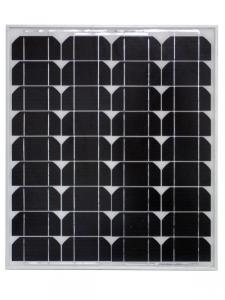High Efficiency Solar Panels for Metal Roofs - 250W Solar Modules for Quality
- Loading Port:
- Shanghai
- Payment Terms:
- TT OR LC
- Min Order Qty:
- 2500 watt
- Supply Capability:
- 250000000 watt/month
OKorder Service Pledge
OKorder Financial Service
You Might Also Like
Specification
Product Description:
Product Description:
1.Structure of
Polycrystalline Silicon Solar Panel for 250W
I. High efficiency crystalline silicon solar cell. Even if under the weak light, the solar module can produce maximum power output.
II. Tempered glass (toughened glass): Anti-reflecting coating and high transmission rate glass increase the power output and mechanical strength of solar module.
III. EVA and TPT: Using high quality EVA and TPT to prevent destroying and water.
IV. AI frame: Without screw, rner connection. 6 holes on the frame can be installed easily.
V. Junction box: Multi function junction box with water proof.
VI. Long lifetime: ≥25 years; Less power decrease.
VII. Good performance of preventing from atrocious weather such as wind and hails.
VIII. Resisting moisture and etching effectively, not effected by geology.
IX. The certificate issued by international authority: UL, TUV, IEC, CE.
2.Solar Module Specification
Warranties:
10 years limited product warranty
15 years at 90% of the minimal rated power output
25 years at 80% of the minimal rated power output
Specificate sheet:
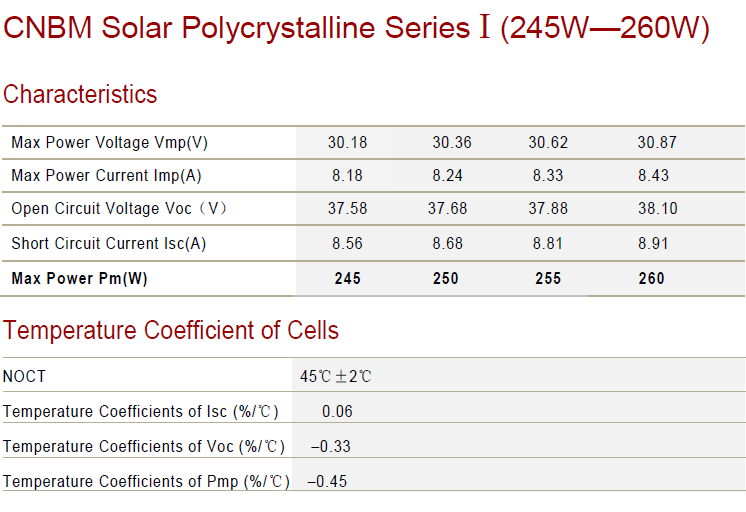
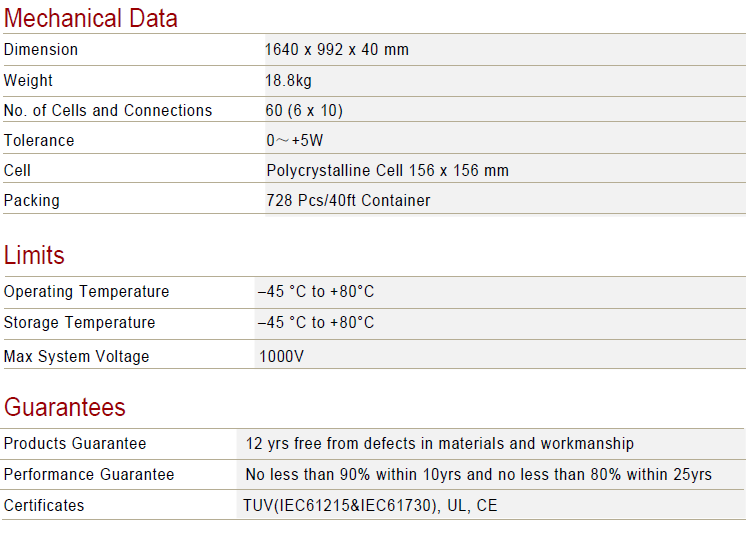
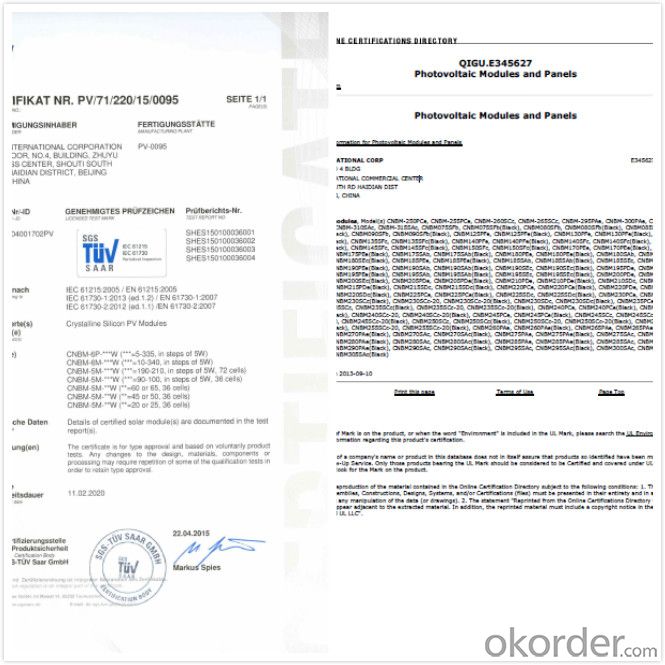
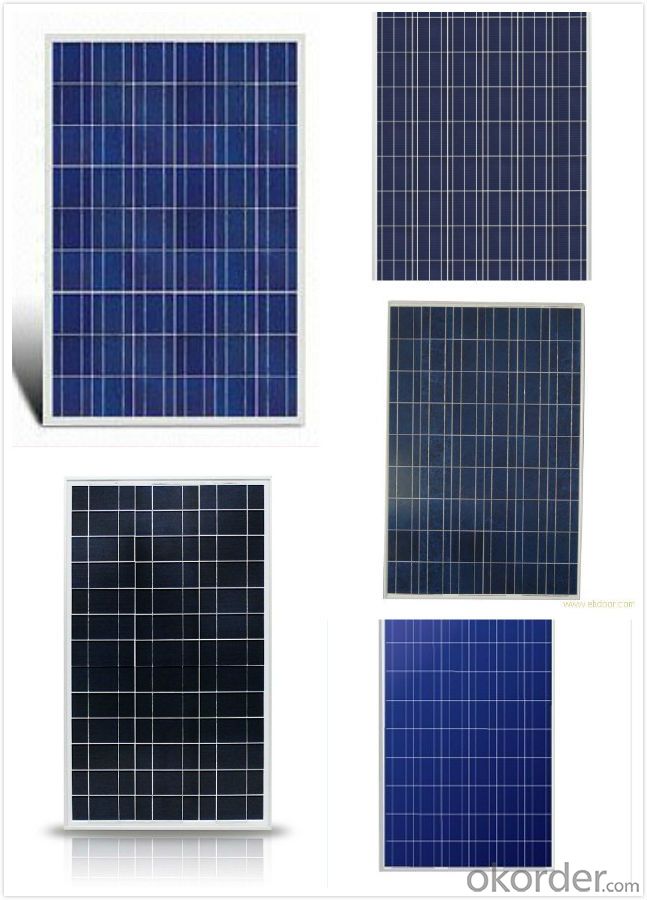
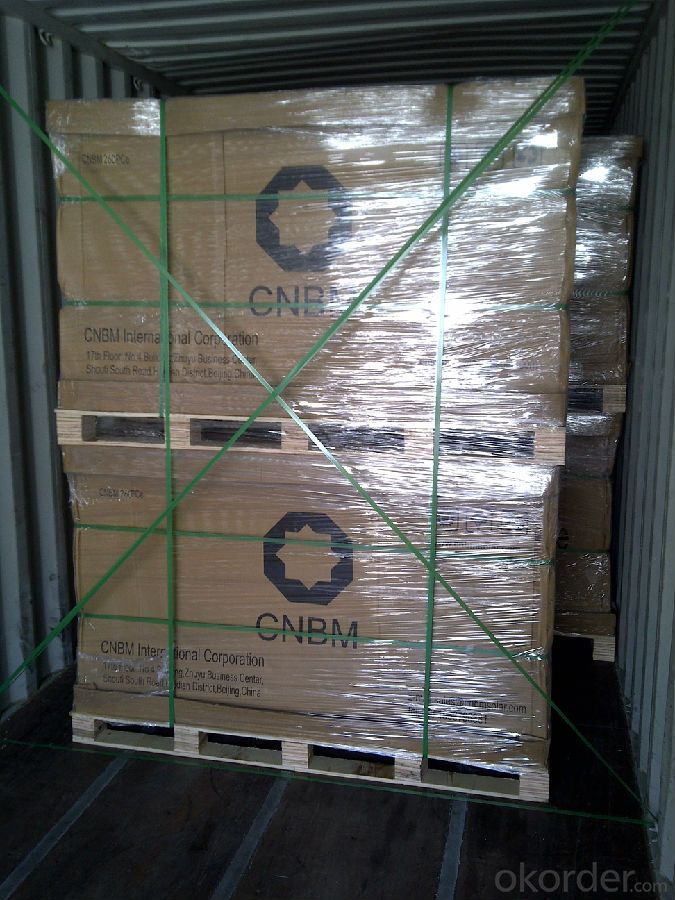
5.FAQ of Solar Module
1. Q: Are you a factory or trading company?
A: We are a factory.
2. Q: Where is your factory located? How can I visit there?
A: Our factory is located in Jiangyin, Jiangsu, China, near Shanghai. You are warmly welcomed to visit us!
3. Q: How can I get some samples?
A: Please connect me for samples
4. Q: Can the price be cheaper?
A: Of course, you will be offered a good discount for big amount.
- Q: I need to power a series of meraki wireless repeaters that plug into a standerd wall outlet. consuming 5v or .08 amps However I need this in a remote location (like out in the middle of nowhere) Using A solar panel as power supply and a battery to store the energy but, how and what do I use to convert the energy coming from the solar panel to the battery and the batteries power supply to match the needs of the meraki wireless repeater? How do I make this as compact as possible? Do I need a ac/dc converter? or dc/ac converter? Any suggestions or solutions would be great !
- Search the web for some of the inexpensive solar Cell Phone Chargers. They can be hooked in series or parallel as needed to get you teh voltage and current needed. The 80mA is not too tough, thats not much current. Suggestion is to use a battery that is constantly trickle-charged by the solar panel. This will assure operation on a cloudy day or at night. Another strange source for solar panels and solar charge systems is, believe it or not, Harbor Freight Tools. they are on the web as well as have stores all over.
- Q: My washer is 20 volts 60 gz,9.6 amps. The solar panels I am looking at are: Sharp ND-208U Solar Panels (208 Watt) List Price $,479.99 Only $,049.99 Sharp Solar Panels (208 Watt) List Price $,352.99 Only $,040.99 If I buy that will it be enough to run my washer?
- The solar panels have a 2 volt DC output.You would have to get an inverter and a small battery bank to run the washer.
- Q: Can solar panels be used in areas with high snowfall?
- Yes, solar panels can be used in areas with high snowfall. However, it is important to consider the design and installation of the solar panels to ensure their efficiency and performance in snowy conditions. Snow can reduce the amount of sunlight reaching the panels, which may affect their power generation. Additionally, the panels should be angled properly to allow snow to slide off easily. Regular maintenance, such as clearing snow accumulation, may also be required in snowy regions to optimize the performance of solar panels.
- Q: Hi All,I need some resources for a research project i'm doing on Solar Panels/Cells.So do you know of any good books or online materials that basically covers how solar cellwork from level 0 to calculating the energy output based on intensity of the light and the area of the panel. Book titles will be preferable but i'd like to build a strong base before tackling long and complicated formula(s)... so any suggestions? Your help will be appreciated :)THANKS IN ADVANCE!!
- How Solar Cells Work by Scott Aldous Inside This Article . Introduction to How Solar Cells Work 2. Photovoltaic Cells: Converting Photons to Electrons 3. How Silicon Makes a Solar Cell 4. Anatomy of a Solar Cell 5. Energy Loss in a Solar Cell 6. Solar-powering a House 7. Solving Solar-power Issues 8. Solar-power Pros and Cons 9. Lots More Information 0. See all Physical Science articles You've probably seen calculators that have solar cells -- calculators that never need batteries, and in some cases don't even have an off button. As long as you have enough light, they seem to work forever. You may have seen larger solar panels -- on emergency road signs or call boxes, on buoys, even in parking lots to power lights. Although these larger panels aren't as common as solar powered calculators, they're out there, and not that hard to spot if you know where to look. There are solar cell arrays on satellites, where they are used to power the electrical systems. You have probably also been hearing about the solar revolution for the last 20 years -- the idea that one day we will all use free electricity from the sun. This is a seductive promise: On a bright, sunny day, the sun shines approximately ,000 watts of energy per square meter of the planet's surface, and if we could collect all of that energy we could easily power our homes and offices for free.
- Q: Can solar panels be used in areas with high levels of hurricanes?
- Yes, solar panels can be used in areas with high levels of hurricanes. However, it is crucial to ensure that the solar panel installation is designed and built to withstand strong winds and other extreme weather conditions. This can be achieved through proper engineering, using sturdy mounting systems, and adhering to local building codes and regulations.
- Q: Can solar panels be installed on parking lots or garages?
- Yes, solar panels can be installed on parking lots or garages. In fact, these locations are ideal for solar panel installations as they provide ample space for the panels and can harness the solar energy efficiently. Additionally, installing solar panels on parking lots or garages can also provide shade for vehicles and reduce energy costs for the facility.
- Q: I'm going to pitch an idead to my school about switching to Solar Energy. What are positive and negative effects of the solar panels?Also what is the cost for installing them into a highschool?How much would the electricity bill decline afterwards?
- If you hope to get a solar panel that can run appliances and air conditioning.. then you are not even close to being realistic about what solar panels can do. If you really want to install a solar panel array on your home, then you need to talk to a company in your area that designes and installes them because every installation is different.. so you won't get an answer here on Yahoo. You can expect to spend $20,000 to $30,000 that will provide enough solar power for the average home.
- Q: Are there solar panel systems that I can plug directly into my house to help reduce my electricity bill? If so, are they very expensive? Any help would be greatly appreciated!
- I wish it was that easy! Maybe it will be soon. But at this time, no, there isn't. And if you have a solar collection system, you have to have a way to store the energy when you're producing more than what you are currently using. That usually involves an expensive battery array. But it's necessary. The power coming directly from the solar panels will be erratic and sending it to the battery array for storage and then use allows for the home to draw a consistent level of power. And this battery system also allows for storage of electricity for use when the sun isn't shining like at night. The system should be set up to use your power first, then go to the grid. It should also allow for distribution to the grid when your system has stored all the power it can and that's when your meter will run backwards and the power company will be paying you! There are a lot of federal and state income tax rebates for alternative energy installation costs. Check out what Oregon might toss into the package along with the Feds and see where you might come out.
- Q: Can solar panels be used in off-grid systems?
- Yes, solar panels can be used in off-grid systems. Off-grid systems are designed to operate independently from the electrical grid, and solar panels can generate electricity from sunlight, making them a reliable and sustainable source of power for off-grid applications.
- Q: What is the proper diode to use on an 5v 500ma solar panel?
- At least a 2 amp diode. rated above the 2 volts that are commonly found on the market. A blocking diode must be able to stop a higher current and voltage than the panel maximum. A diode will work on any voltage and current lower than it rating.
Send your message to us
High Efficiency Solar Panels for Metal Roofs - 250W Solar Modules for Quality
- Loading Port:
- Shanghai
- Payment Terms:
- TT OR LC
- Min Order Qty:
- 2500 watt
- Supply Capability:
- 250000000 watt/month
OKorder Service Pledge
OKorder Financial Service
Similar products
Hot products
Hot Searches
